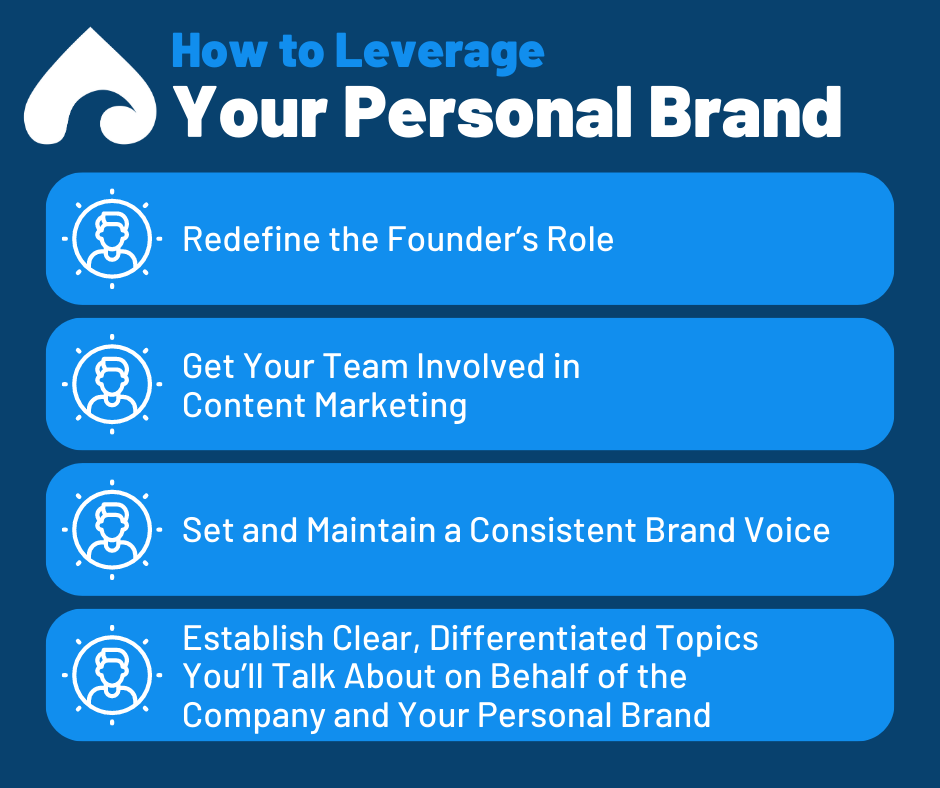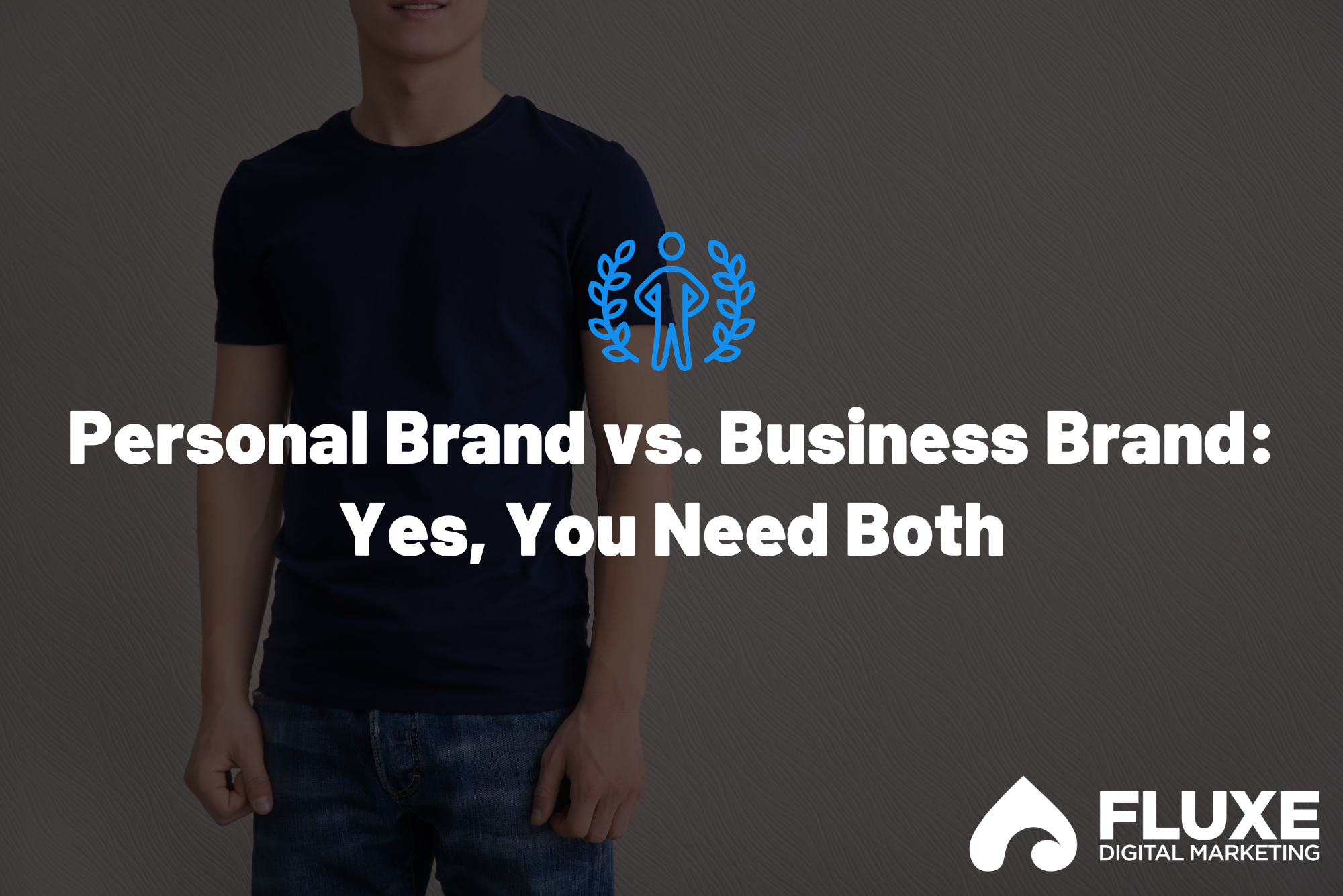If you’re like most business founders, you put all your time and effort into nurturing your company’s brand, and you selflessly neglect your personal brand.
In fact, you may not even have a personal brand. You’re strapped for time and resources, and you’re trying to scale your business. That’s much more important than your personal branding…
…or so you think.
Why You Need a Separate Personal Brand
In the past month, I’ve had five separate conversations with five good friends — all founders who had recently sold their businesses. Unprompted, in every conversation, they told me their biggest regret was that they’d never nurtured their personal brand.
Despite being extremely intelligent, accomplished individuals, these five former owners had zero notoriety to leverage into their next venture. Their entire identity was wrapped up in their last business, and no one outside their immediate circle knew who they were. Despite all their achievements, they constantly had to justify themselves to their peers.
A personal brand is an intentional trail of evidence you leave behind that makes it easier to validate your credibility. When someone Googles you, you want something to show up. You don’t want your personal LinkedIn profile to look like a ghost town.
Yes, at this stage of your career, it’s time-consuming to maintain both your business’s brand and your personal brand, but it’s critical to focus on both. Build your company’s brand to reap immediate opportunities, and build your personal brand to sow future ones.
How Your Personal Brand Can Support Your Business’s Brand
That’s not to say you shouldn’t leverage your personal brand to build your company brand.
At the end of the day, people buy from people. Consumers connect on a deeper level with a personal brand — when done right — than with a company brand. Can you think of Facebook (now Meta) without thinking of Mark Zuckerberg? Can you think of Apple without Steve Jobs?
I certainly can’t.

How to Leverage Your Personal Brand
“But Joel, I’m a business founder with barely enough time to eat dinner in the evening! How do you expect me to carve out time to build my personal brand?”
As I’ve helped my clients answer this exact question, here’s what I’ve found to be most effective.
1. Redefine the Founder’s Role
If you’re still involved in your company’s day-to-day operations, your odds of building your personal brand and your company brand are slim to none.
If you want your company to grow larger than you, you have to give up some control and transfer authority to your team in order to help them help you build your company brand.
Redefining the founder’s role also allows the company to leverage the skills and expertise of other team members, particularly subject matter experts (even team members who aren’t necessarily aware they’re subject matter experts).
This develops a more diverse and resilient brand, with multiple voices representing the company. It also allows you as the founder to focus on strategic, high-level decision-making that can drive the company forward.
This isn’t every person for themselves. It’s using the collective knowledge of the group to create a rising tide that elevates everyone. Use opportunities like public speaking events, industry conferences, panel discussions, workshops, etc., to build your team’s credibility and showcase your collective expertise.
You may also highlight the achievements and contributions of your SMEs through employee spotlights on your company website, newsletters, and social media channels.
To start, you’ll need to allocate your responsibilities to people who can’t do them as well as you do — yet. But with your mentorship and training, your team will eventually tackle those tasks better than you.
None of this means you as the owner have to go dark. It just means you have to see yourself differently. Start by updating your bio to cast yourself as a visionary, and continue by including your team in your content marketing strategy.
2. Get Your Team Involved in Content Marketing
Your company’s brand (by which I mean the feeling your clients have about you) is its people, its process, and its product. Let’s focus on the first ingredient of those three.
As you grow your company brand, not tapping into the knowledge of your team — the people who make the company what it is — can create a very myopic perceived brand view.
Most owners hesitate to involve their staff in content marketing because they don’t want to add yet another task to their team’s plate. Also, you may not trust your team to represent your company as well as you do. What if they say something that isn’t aligned with the company? What if they don’t have the same level of knowledge you do?
You don’t have to throw your team members into the deep end right away. As you slowly transition into a mentorship role, start by asking team members to write content around their expertise. That could look like including them in a feature in your newsletter, having a team member write or contribute to an article or video, or giving them a byline on your blog or LinkedIn posts.
3. Set and Maintain a Consistent Brand Voice
Of course, written content needs to be edited and proofread. This means your company needs to designate a person, or a team of people, who oversee(s) the brand voice to create consistency across platforms.
This is why my editors at Fluxe never let anything see the light of day without them first proofreading it. [Editor’s note: Our pleasure, Joel!]
Why is this important? It all circles back to your relationship with your customers. Consistency fosters:
- Recognition: A consistent brand voice makes your brand instantly identifiable across all platforms. Whether a customer reads a blog post, watches a video, or interacts with customer service, the experience should feel cohesive. This recognition boosts brand loyalty and customer retention.
- Trust: Consistency in messaging and tone builds trust with your audience. When customers know what to expect from your brand, they’re more likely to trust you, engage with you, and eventually buy from you.
- Customer Experience: A consistent brand voice contributes to a seamless customer experience. Whether they’re interacting with your brand online or offline, customers should feel they’re engaging with the same entity. This can boost customer satisfaction and drive repeat business.
So, how do my editors achieve consistency? I asked them. Here’s what they told me:
- Develop a Brand Style Guide: A comprehensive style guide is a crucial tool for maintaining a consistent brand voice. It should include your brand’s mission, vision, and values, as well as specific guidelines for tone, language, and style. This guide should be shared with anyone who creates content or communicates on behalf of your brand.
- Train Your Team: Everyone in your organization should understand and be able to convey your brand voice. Provide regular training and updates to ensure all team members, from marketing to customer service, are aligned.
- Regularly Review and Audit Your Content: Conduct regular audits of your content across all channels to ensure consistency. Look for any deviations in style or tone and make necessary corrections.
- Leverage Tools and Technology: There are tools available that can help maintain brand voice consistency, such as content management systems, social media management tools, and AI-driven writing assistance tools. These can help automate and streamline your content creation and distribution processes.
- Consistent Feedback and Improvement: Encourage feedback from team members and customers to identify any areas of inconsistency or confusion. Use this feedback to continuously refine your brand voice and improve consistency.
4. Establish Clear, Differentiated Topics You’ll Talk About on Behalf of the Company and Your Personal Brand
This is important, because your life and identity are not your company. (If they are, you need to reevaluate some things.)
Start by deciding what you want to accomplish by building your personal brand. For me, it’s to build a reputation that precedes me, build my professional network, leverage for future opportunities, and create consistent lead generation.
Then, work backward to find topics that facilitate your personal brand goals. Create three to five main content categories or “buckets” your content will fall into.

Conclusion: Play the Long Game
Who says you can’t have your cake and eat it, too? Your company brand can absolutely benefit from your personal brand in a symbiotic relationship. If you play your cards right, you’ll get to play the long game (with your personal brand) while seeing immediate benefits (with your company brand).
Transitioning from a personal brand to a company brand won’t happen overnight. It’s an ongoing process that requires patience, persistence, and adaptability. But doing so can produce incredible benefits, both in the heyday of your career and in your retirement.



